
08-16-2023 - Case Study
Shot on Sony: How Steve Holleran Used VENICE 2 and an Array of Alphas to Shoot the Surreal Drive Movie ‘Sympathy for the Devil’
By: Oakley Anderson-Moore
Floods, a broken collar bone, and a dark take on a road-trip movie shot almost entirely at night. Did we mention everything in the car was shot on an LED wall?
These are a few of the hellish challenges that cinematographer Steve Holleran faced head-on in Sympathy for the Devil, a film where a mysterious passenger (Nicolas Cage) forces a soon-to-be-father (Joel Kinnaman) on a reality-questioning drive through Las Vegas.
For Holleran, it was an exciting cinematography adventure.
With an ambitious story and new technology to tell it with, Holleran not only used the new Sony VENICE 2 cameras with custom Panavision lenses for principal photography, he personally ended up filming the volume plates using a custom rig of eight Sony A7Siii that would become an integral part of the film.
From pioneering new technology with Sony cameras, getting a metal plate in his chest, or the first day on set where everything nearly fell apart, Holleran sat down with Sony Cine to give us a look into his process creating the look of Sympathy for the Devil.
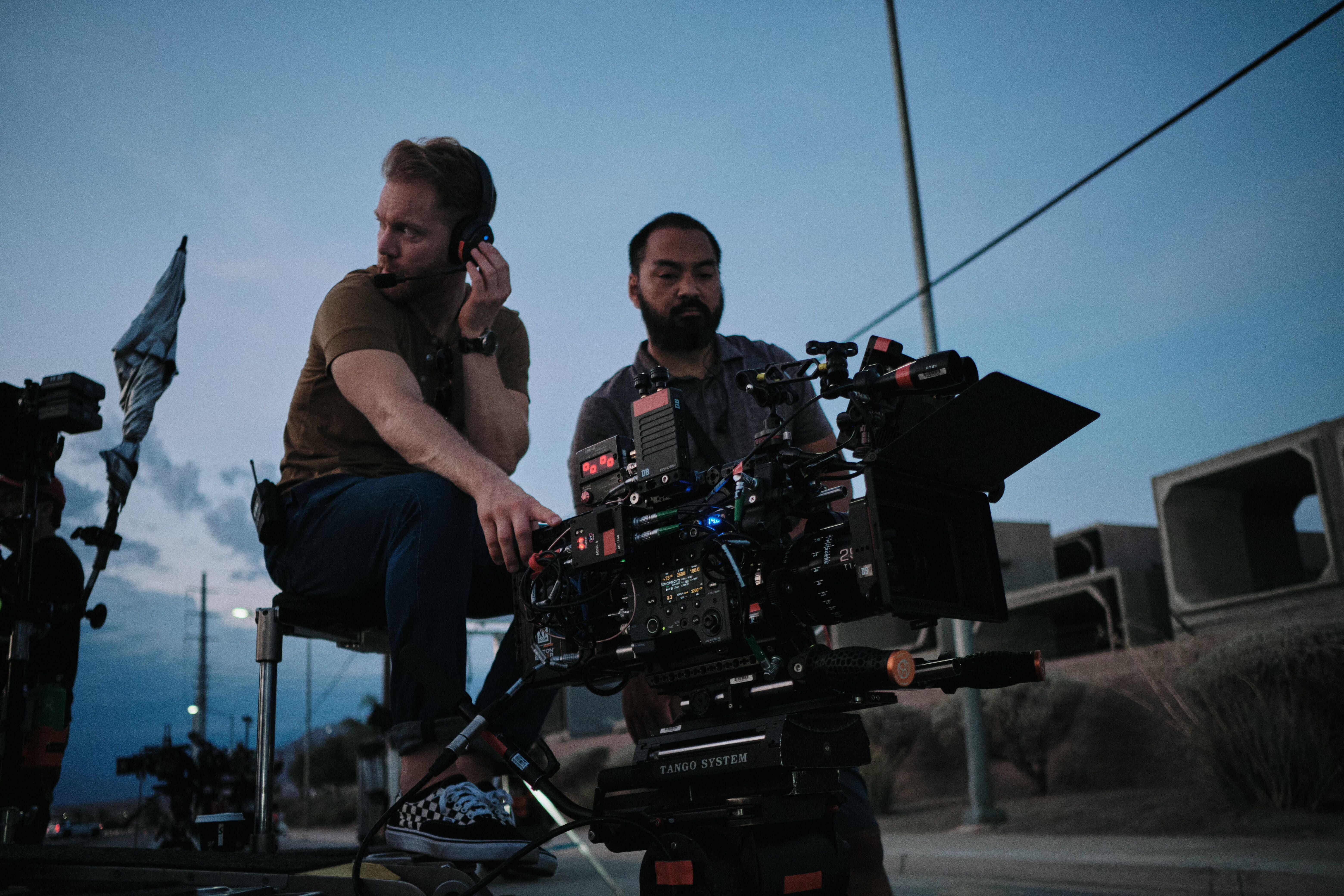
How the camera helped Holleran go from scared little kid to brave cinematographer
Before Holleran brought visuals to life on films like Missing, and now Sympathy for the Devil, Holleran started in the adventure filmmaking vein – not as a career path, but as a way of confronting fear.
“I was always interested in adventure but as a young kid, ironically, I was scared about the unknown,” explains Holleran. “I was scared about even leaving the house for a time. But I loved adventure stories. As I got older, I discovered that, with a camera, I could take little adventures.”
The first adventures Holleran took that got him noticed were through surf videos.
“The first few were small things that I did around my hometown, which is near San Diego, California, was go out with my friends and surf. I would take videos of them, cut them together, and we'd play them at the local surf shops. Every so often people would come by and say, ‘Hey, kid, you got a good eye.’ I got fired up with the idea that the camera could be my magic carpet and could give me the courage to go places. I started to fall in love with the idea of travel, adventure, filmmaking and maybe making a little bit of money on the side. And that led me to get into documentaries at a pretty young age still, 17, 18.”
After college, Holleran was awarded a fellowship that paid for him to travel abroad for a year. In that time, he would live with three subsistence fishing communities and make an environmental documentary about overfishing in the South Pacific. There was only one rule: he couldn’t come home or he would forfeit the money.
“I was a little terrified to step outside my comfort zones but I had my camera and I was hoping that would be enough. And I went and lived with Samoan, Chilean, and Maori fisherman for a year and tried to tell their story and, in the process, fell in love with the filmmaking experience and realized that I wanted to do this for the rest of my life.”
Eventually, Holleran went down the path of narrative filmmaking to take his craft into further uncharted territory. Holleran shot his first feature, which went to Sundance and launched his career, and before he knew it, he had made his dream a reality.
“I’d gotten my start as a cinematographer!”
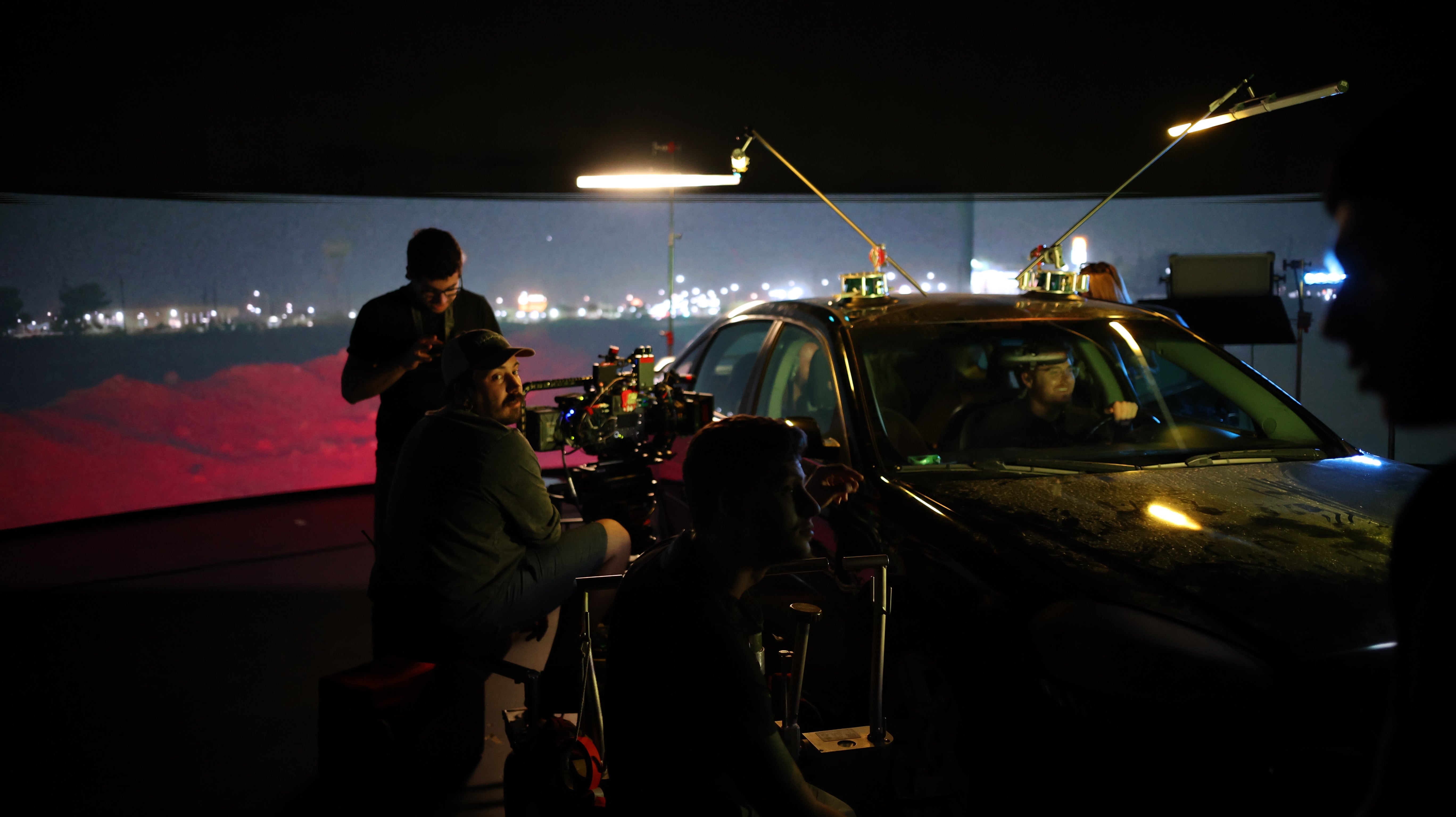
How Sympathy for the Devil offered a brand-new technical challenge
Now as a working cinematographer, Holleran tries not to make the same movie twice. When first reading the script for Sympathy for the Devil, something about it got his attention.
“It had some compelling themes,” says Holleran. “It’s a story about a history of violence, it's a story about what is right and wrong and good and bad.”
Not to mention, Holleran also liked that it would be a big technological challenge.
“The producers told me right off the bat, ‘if you do this movie, you're going to be shooting a night car film completely on an LED volume. We're not taking the car on the street, you're going to have to make it look like it's moving and make it look like it's moving in nearly pitch dark desert environments.’ And that was a little scary but also intriguing. So much of this movie takes place on the volume, 50, 60, maybe 70%. You can't make many mistakes in a situation like that. I'd gotten used to stepping outside my comfort zone so this sounded like the right kind of challenge.”
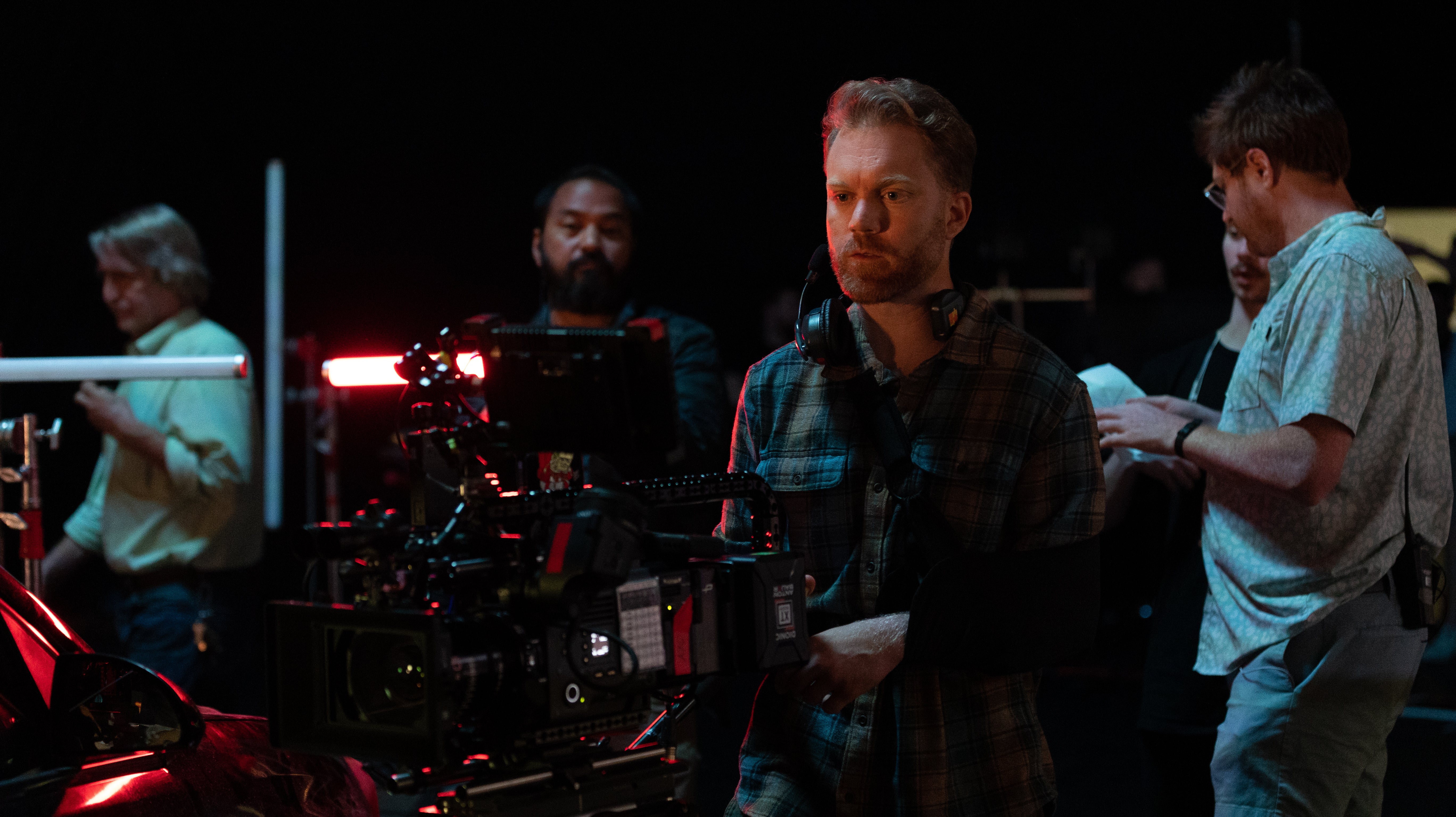
For plate cameras, lens choice also became more about creating reality than cinema.
“We ended up shooting on 18mm Sony Batis lenses for a couple of reasons,” says Holleran. “One, it gave us a good overlap of the image. You need 20% overlap between each of the cameras in the array so that you can blend them when you put them up on the volume. So we needed a pretty wide lens, but we also needed fast lenses, lightweight lenses, and we needed auto-focus lenses as well. We weren't going to be able to control the focus of all of the cameras from inside the vehicle, there just wasn't enough power. We had to power all of this and all of the recording devices and monitors, which becomes a big project when it's in a sedan that's driving down the road by itself. It had to be completely self-contained.”
The plate capture itself only took about eight hours a night for two nights, preceded by three weeks of prep and followed by another three weeks of testing to get the images in the right place to shoot them. And then on the last shot on the last exterior section, the worst happened.
“I fell mid shot running down this hill to catch the final shot and I shattered my collarbone,” describes Halleron. “So all of the work that we did on the volume that last week, I was dealing with a broken collarbone. It made it really difficult, but I wasn't willing to let it go and not supervise the finishing of the film when we'd worked so hard to get it there. I think the crew came together around that accident and I think that comes through in the film. I don’t know why, but sometimes the suffering on the set lends itself to a chemistry that comes through on camera. I have a strong memory of this film in my bones – literally.”
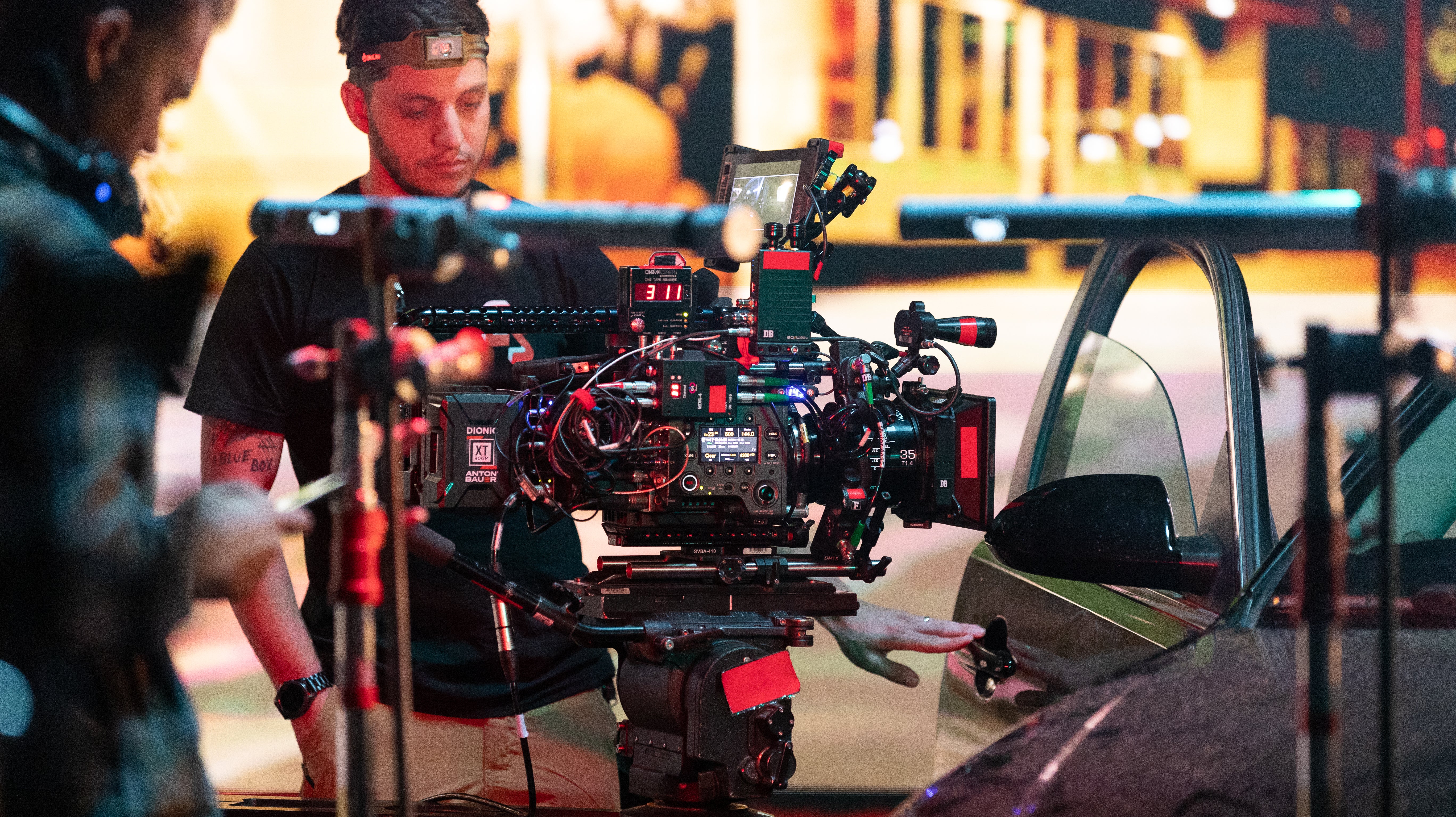
Using the Sony VENICE 2 to shoot a moody, reality-bending world
After discussions with the team and director Yuval Adler, Holleran understood the unique world he would create for the film.
“We wanted the film to have a surrealist, painterly quality to it like this punchy, colored, upside-down kaleidoscope look to it when it came to the lighting,” describes Holleran. “Because this is a movie where truth and reality get questioned and you don't know, as an audience member, what's actually true. We wanted to amplify that with the camera work and with the lighting but in subtle, tasteful ways.”
To get this look, Holleran needed the Sony VENICE 2.
“The VENICE 2’s were chosen because I wanted to shoot this large format and they were also chosen because they have dual ISO setting,” explains Holleran. “I knew that it was going to be useful at night when we were shooting all of the sequences that happened outside the car. A lot of the times we were in dark, pitch-black river gully or nearly-pitch-black side of the road. I knew we were going to be shooting very fast because this was a 20-day production and we weren't always going to be able to have 20 or 30 lights off the truck in some locations. I needed a camera with a little extra leeway in terms of light sensitivity. I'd used the original Sony VENICE for that successfully before.”
While Holleran had used the original VENICE camera many times before, this production was his first foray into the VENICE 2. According to Holleran, the transition was seamless.
“The VENICE 2s worked great,” says Holleran. “They have great low light ability, they're very clean, the sensor sees color well. I was thrilled with them. The color really fell into place. We were done with a base grade on this movie in a couple days, and then we spent the rest fine tuning, shaping it like you would with a painter. What do you want people to look at, and where do you brighten something up? The Sony VENICE 2 had a ton of latitude in pulling things out of the shadows without the image falling apart, and that's really great. It gives you a ton of freedom in the Color suite. And knowing that before shooting the movie, as I did, it gave me confidence to shoot some things that on the tape were dark because we didn't have enough lights to do it the way we normally would, but still had shape.”
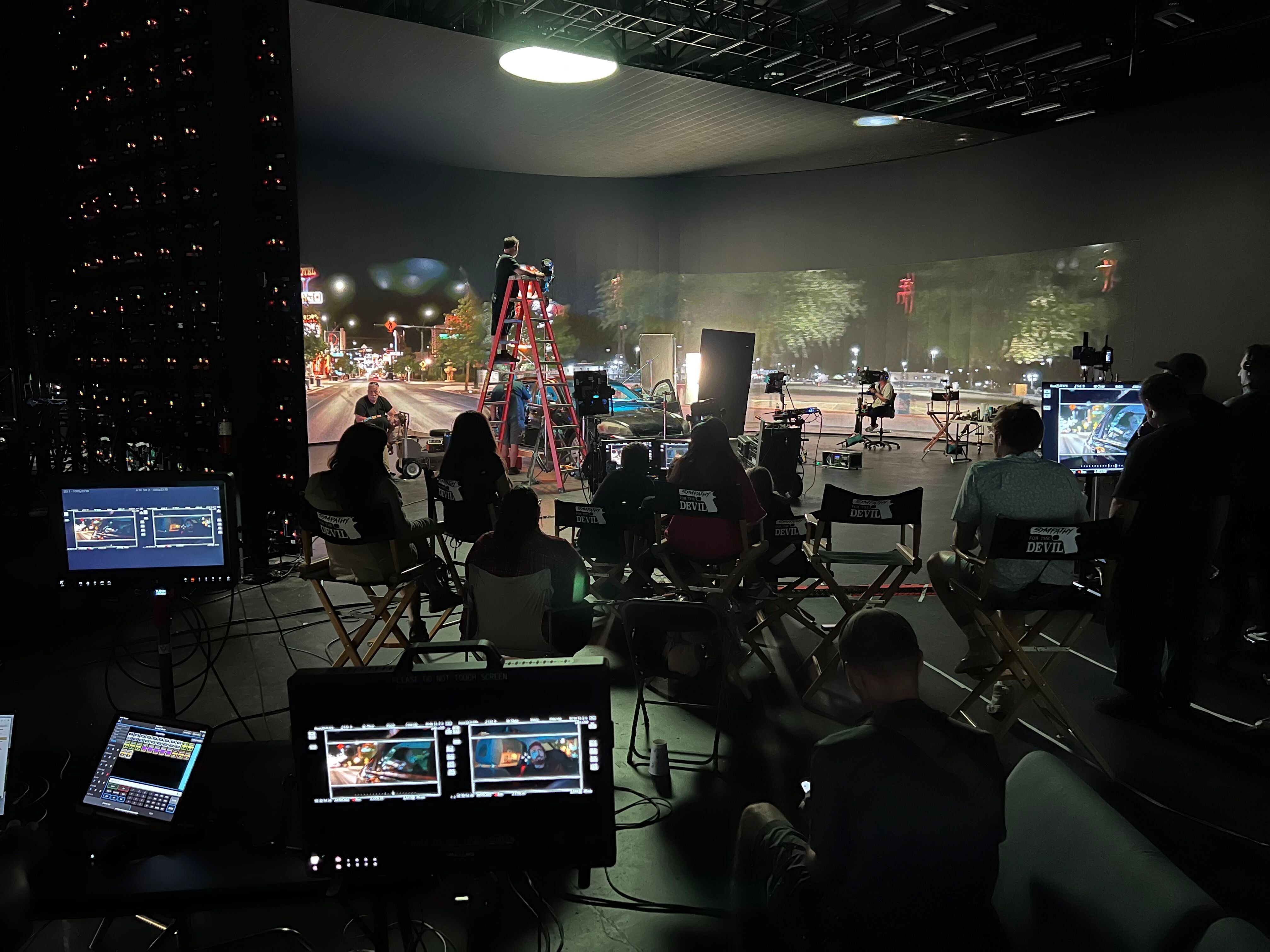
And while shooting everything in the car on an LED wall made it a challenge, it also opened up a lot of creative possibilities.
“That directed me towards creating a dark moody look on the stage, one where we had a lot of moving light – and that meant using the plates that were on the LED wall. There was a plate that went on the ceiling with streetlight reflections that would run across the dash and the window glass. There were sometimes a dozen other lighting units that would light the actors and provide a unique ambience that changed a little bit between a few colors that I've chosen that matched the Vegas world. And all of it was to create the sense of movement and this hellscape that develops throughout the night.”
Holleran even had lenses customized at Panavision to pull off the look under these shooting conditions.
“I used a set of large-format modern Panavision PanaSpeeds,” says Holleran. “They are fast, I think they're a 1.4 mostly across the range. And I did a custom tune at Panavision. I added a blooming effect to get this frosted halation that happens around lights for this surrealist quality I was going for. I lifted the blacks across the lenses to buy myself a little extra room to shoot really dark sequences at night.”
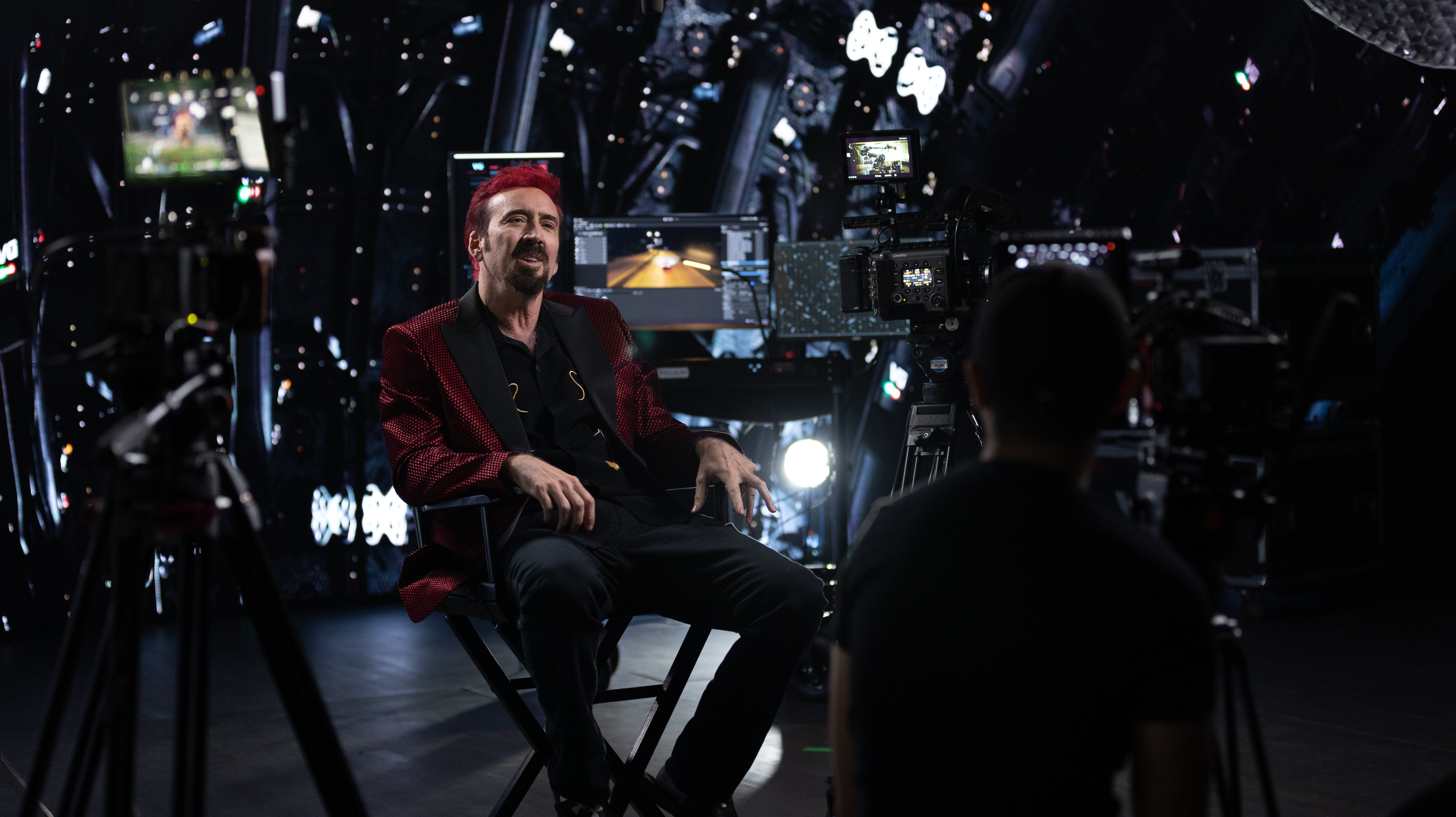
How the first day of the LED wall shoot almost became Holleran’s worst nightmare
During production of Sympathy for the Devil, there were many moments Holleran loved, like capturing a performance by Nick Cage that came to life as serendipitously as it did from planning. But on the very first day of set, Holleran experienced a moment of terror, and it was even worse than breaking his collarbone!
“Most of my anxiety as a creative was built around the unknown of doing low-light night driving work on a volume for most of the movie, and not knowing for a really long time if it was going to work,” admits Holleran. “We were literally experimenting up to the day that we put Nick Cage and Joel Kinnaman in the car.”
When Holleran got to the stage, all of his plates that he had meticulous crafted (and broke his collar bone making) looked really wrong.
“It was like all of the plates had been overexposed – and they were covered in all these glitches that I hadn't noticed in any of the other tests. I couldn't figure out what it was. And when you've got five days on a volume and you've got 50 pages to shoot, there's not a lot of time to experiment and to figure anything else out! For about an hour, we were all running around tearing our hair out. The producers were looking over and saying, ‘We're going to have to turn this whole screen blue. We're going to have to throw out all this plate work that you did and we'll just do it in post, green-screen style!’ We're all nearly in a panic and Nick and Joel are sitting in the car waiting for us and we're scratching our heads trying to figure out what we did wrong and what could be done to fix it. It was one of those moments as an artist when you're like, ‘I'm not cut out for this.’
Luckily, he had some great support at Vu Studios, and in the end, the solution came by listening to his instincts and the camera.
“I don't know how this idea came to me but, at the very last minute, I thought, ‘Oh, maybe I'm having all these issues because the ISO setting on the camera is set for night exteriors and is seeing too far into the dark, and the wall needed to be treated with less sensitivity. Let's put the ISO back to its native setting.’ It's a technical thing but it's also a bit of a miracle. As soon as we switched it off, everything fell into place. They were like, ‘Roll it right now!’ We just started rolling the movie and we never looked back.”
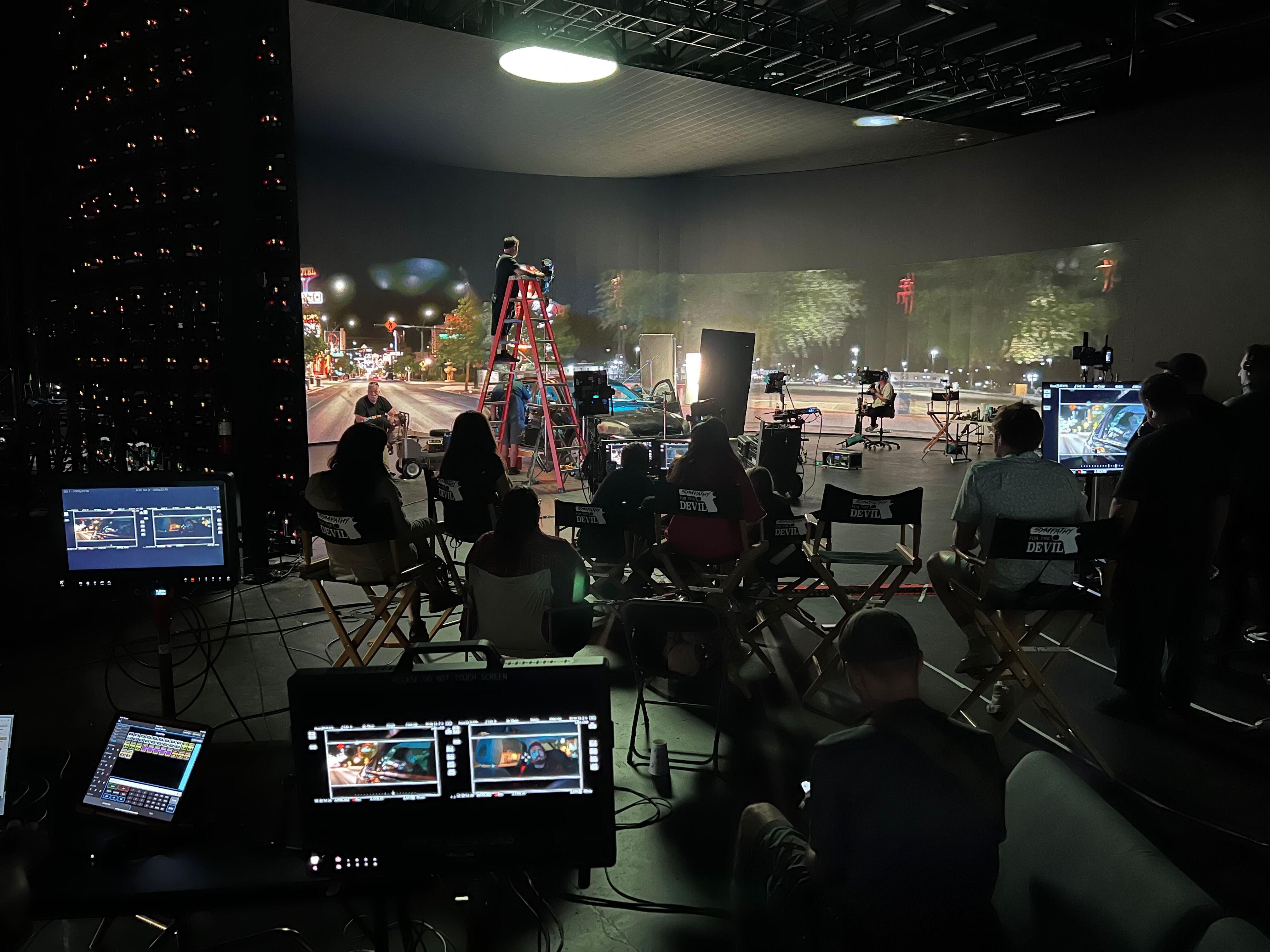
When it comes to filmmaking, Holleran treats each set like a mission to the moon
Through trials and tribulations on set, the crew had bonded and the whole team was very pleased with the work they did, especially given some of their challenging circumstances.
“The film is called Sympathy for the Devil and it definitely felt like we were haunted by the devil a few times,” jokes Holleran. “We dealt with atrocious monsoons that would blow through the set right when we started rolling, would tear tents away and wash crates of equipment through the desert.”
But to Holleran, the most important tactic in the face of challenges is to keep perspective.
“You go down these rabbit holes, and you get wrapped into the speed of filmmaking and set work, that sometimes you can forget where you started. One of the biggest things a cinematographer has to do is remember the original vision. You have to be able to pull yourself out of this high-stress moment and look at things detached to decide what to do.”
For Holleran, his problem-solving mindset was the most important thing he could bring to this film. And perhaps, a penchant for the adventure that first brought him to filmmaking to begin with.
“I think about Apollo 13 and the guys stranded on the other side of the moon,” says Holleran. “They don't have everything that they need, they're running out of time and they all come together as a team with Mission Control to figure out how to use things that aren't traditionally used to help get them home. On a much smaller, less high-stakes scale, that mindset is something I've used a lot over the years in filmmaking. On indie films, you can be stranded on the dark side of the moon artistically and you don't have enough time, oxygen, or money to often get the results that, one, you're looking for, two you've promised or, three, that have been demanded. I turn to new technology or interesting non-traditional pieces of equipment like a Sony a7S III, for instance, to help get me there. That was a strong mindset throughout my career and particularly on Sympathy for the Devil.”
Watch Sympathy for the Devil starring Nick Cage and Joel Kinnaman in theaters and on demand starting July 28.




